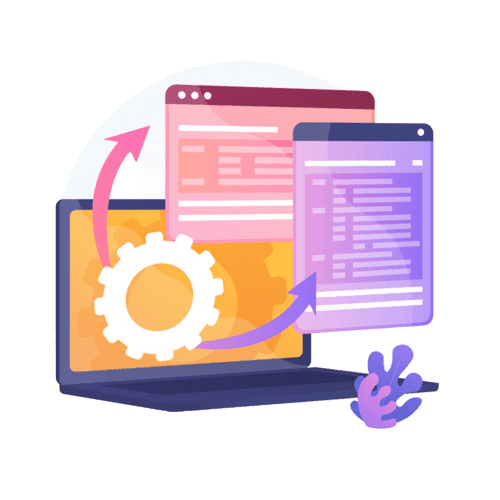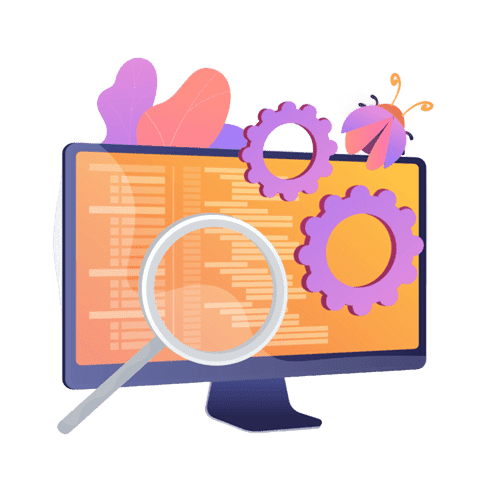Our mastermind meetings are designed to provide a supportive and empowering space for female entrepreneurs to connect, collaborate, and overcome challenges together. As facilitators, we believe in fostering a culture of confidence, accountability, and growth.
Leveraging SPICE for Software Supplier Qualification in the Automotive Industry
In the ever-evolving automotive landscape, software quality is paramount for vehicle safety and performance. By implementing SPICE-based qualification mechanisms, car manufacturers like Fiat Auto can effectively evaluate their software suppliers, ensuring robust process capabilities and fostering a culture of continuous improvement. This standardized approach not only strengthens supplier relationships but also enhances the reliability and safety of the final automotive products.

As the automotive industry increasingly relies on software to enhance vehicle functionality and user experience, the importance of high-quality software acquisition has never been more critical. To address this need, car manufacturers are employing sophisticated assessment models to evaluate and qualify their software suppliers. One such method gaining traction is the SPICE (Software Process Improvement and Capability Determination) model, particularly its specialized version known as Automotive SPICE. This approach ensures that suppliers meet rigorous quality standards, thereby enhancing the overall reliability and safety of the vehicles produced.
The Rise of Software in Automotive Systems
Initially, Information Technology (IT) made its mark in automobiles through simple function controls. However, over time, IT has evolved significantly. Today, modern vehicles are complex systems with multiple electronic control units (ECUs) working together to perform time-critical and safety-critical functions. These advancements demand robust and reliable software systems, which has led to the necessity for stringent supplier qualification processes.
Challenges in Traditional Quality Management Systems
Historically, the automotive industry relied on standards like ISO 9001 for quality management. While these standards provided a good foundation, they often fell short in the realm of software quality assurance. The complexity of software systems, especially those that are safety-critical, required more focused and detailed assessment mechanisms. Thus, automotive manufacturers turned to models like SPICE and CMM (Capability Maturity Model) to evaluate and improve their software processes systematically.

%
Increasing Adoption of SPICE Assessments
According to a survey conducted by the Automotive SPICE initiative, over 70% of European automotive manufacturers have integrated SPICE-based assessments into their supplier qualification processes as of 2023. This demonstrates the industry’s growing commitment to standardizing software quality and improving collaboration with suppliers.
%
Impact on Supplier Improvement
A study published by the ISO found that companies using SPICE-based assessments experienced a 35% increase in the implementation of best practices among their software suppliers within two years of adopting the assessment model. This improvement led to a significant reduction in software defects and enhanced overall project delivery times.
Introducing SPICE-Based Supplier Qualification
In the early 2000s, leading European car manufacturers, including Fiat Auto, initiated efforts to integrate SPICE-based assessments into their software supplier qualification mechanisms. The goal was to establish a standard approach to evaluating the capability of software suppliers, ensuring consistency and quality across the supply chain. Fiat Auto’s implementation of the SPICE-based qualification mechanism, known as the ESCAPE project, provides an illustrative example of how these assessments are conducted and the benefits they bring.
The ESCAPE Project: A Case Study
Launched in 2001, the ESCAPE project aimed to improve Fiat Auto’s software acquisition process by assessing and qualifying software suppliers based on their process capability. The project was structured in two phases:
Phase A (2001-2004): This phase involved pilot assessments using the SPICE methodology on 17 Fiat Auto software suppliers. The focus was on key processes like Requirements Elicitation, System Requirements Analysis, Software Design, and System Testing, evaluated up to capability level 4. This phase provided Fiat Auto with a comprehensive understanding of its suppliers’ capabilities, identifying areas of strength and weakness.
Phase B: Building on the success of Phase A, Phase B introduced a formal supplier qualification mechanism. Suppliers were required to meet a defined capability profile to participate in Fiat Auto’s sourcing phase. While strict, this approach was flexible, allowing suppliers with lower capability levels to qualify provisionally if they committed to an improvement program.
Benefits of SPICE-Based Assessments
The SPICE-based qualification process has brought significant benefits to Fiat Auto and its suppliers:
- Enhanced Supplier Selection: By using SPICE assessments, Fiat Auto can objectively measure the quality and reliability of its software suppliers. This ensures that only suppliers with high capability profiles are selected, leading to better quality software and fewer issues in production vehicles.
- Improved Project Monitoring: The detailed insights gained from supplier assessments allow Fiat Auto to synchronize its project monitoring activities with supplier milestones, leading to more effective oversight and control of the software development process.
- Identification of Improvement Areas: SPICE assessments highlight potential areas for improvement, not only for suppliers but also within Fiat Auto’s own processes. This collaborative approach helps both parties enhance their practices and deliver better-quality software products.
- Better Communication and Collaboration: Establishing a common language based on SPICE process definitions facilitates clearer communication between Fiat Auto and its suppliers, reducing misunderstandings and enhancing collaboration.
Conclusion
The Future of Automotive SPICE
Looking forward, Fiat Auto and other major car manufacturers aim to integrate SPICE-based assessments more deeply into their supplier qualification processes. The ongoing development of Automotive SPICE, tailored specifically to the needs of the automotive industry, promises to bring even greater alignment and consistency across the European automotive sector. By setting common standards and expected capability profiles, the industry can ensure that all players—manufacturers and suppliers alike—are working towards the same high-quality benchmarks.
Conclusion
The implementation of SPICE-based software supplier qualification mechanisms represents a significant step forward for the automotive industry. By focusing on process capability and continuous improvement, car manufacturers can ensure that their vehicles meet the highest standards of quality and reliability. As the ESCAPE project demonstrates, the benefits of this approach are far-reaching, impacting not only the quality of the end product but also fostering better relationships and more effective collaboration across the automotive supply chain. As Automotive SPICE continues to evolve, it will play a crucial role in shaping the future of software development in the automotive industry, driving innovation, safety, and customer satisfaction.
References
- Fabbrini, F., Fusani, M., Lami, G., & Sivera, E. (2007). A SPICE-Based Software Supplier Qualification Mechanism in the Automotive Industry. Software Process Improvement and Practice, 12(5), 523-528.
- Automotive SPICE
Wanna know more? Let's dive in!
A Comprehensive Exploration of Agile Auditing
Agile auditing transforms traditional audit processes by incorporating flexibility, collaboration, and continuous feedback. By working in short, iterative cycles called Sprints, audit teams can quickly adapt to changing risks, deliver timely insights, and align more closely with organizational priorities, enhancing both audit efficiency and value.
The Breakdown on Agile Auditing & Scrum
Agile Auditing blends speed and flexibility into traditional auditing, making the process more efficient and responsive. By breaking projects into small, manageable tasks, using roles like Scrum Master and Product Owner, and focusing on constant feedback, Agile ensures better communication, faster results, and continuous improvement in auditing practices.
Our Mentoring Success Stories
Level Up Your QA Game: Mentoring Circles Empowering Quality Assurance ProfessionalsDiscover the Power of Collaboration, Knowledge Sharing, and Career GrowthOur mentoring program aims to foster a supportive and collaborative environment where QA professionals can learn...
Sustainability in Supply Chain Management
Sustainable supply chain management integrates environmental and social considerations into operations, reducing negative impacts while enhancing business performance. It involves tools like supplier codes, audits, and collaboration, with companies such as Unilever, Coca-Cola, and IKEA leading by example. This approach is vital for mitigating risks and achieving long-term profitability.
Product Safety and Security in the Global Supply Chain
Product safety and security in global supply chains face significant challenges due to their complexity, including risks of contamination, counterfeiting, and regulatory disparities. Industries such as food, pharmaceuticals, and medical devices are particularly vulnerable. Addressing these issues presents opportunities for research in regulation, traceability systems, and supplier management strategies.
Supplier Audits: Ensuring Quality and Compliance in the Supply Chain
Supplier audits are essential for ensuring quality, managing risks, and maintaining compliance in the supply chain. By conducting systematic evaluations of suppliers’ processes, products, and compliance with standards, organizations can mitigate potential disruptions, ensure product quality, and build stronger, collaborative relationships for long-term success.
Innovation Compass, a self-audit tool designed to enhance the new product development
The Innovation Compass is a self-audit tool designed to enhance new product development by assessing five key themes: structure, leadership, outputs, teams, and context. By identifying gaps between current and desired performance, it offers a flexible, context-driven framework for improving innovation capabilities in diverse organizational environments.
Product Audit Standards and Regulations: An In-depth Analysis
Product audits ensure product quality, consistency, and regulatory compliance across industries. Key standards influencing product audits include ISO 9001, IATF 16949, VDA 6.5, FDA regulations, and CE marking requirements. These frameworks establish guidelines for verifying product conformity, managing non-conformities, and maintaining high-quality standards in sectors like automotive, medical devices, pharmaceuticals, and more.
9 Types of Product Audit
We explore various types of product audits, including functional, quality, safety, regulatory compliance, customer satisfaction, environmental impact, ethical sourcing, product recall, and end-of-life audits. Each audit type assesses different aspects of a product’s lifecycle, ensuring performance, compliance, and sustainability while aligning with customer expectations and legal standards.
The Future of Process Audits: Trends and Developments
Process audits are evolving with trends like automation, AI, blockchain, and data analytics, enhancing accuracy and efficiency. Future audits will focus on continuous monitoring, risk-based approaches, and real-time insights. However, challenges in cybersecurity, data privacy, and auditor skill development will also shape the future of the field.
Common Findings in Process Audits: How to Address Them
Process audits commonly reveal issues such as inadequate documentation, inconsistent procedures, resource inefficiency, and poor communication. Addressing these findings requires robust corrective actions, risk management, and continuous improvement efforts. Implementing effective corrective and preventive actions (CAPA) ensures compliance, reduces recurring issues, and enhances overall process performance.












